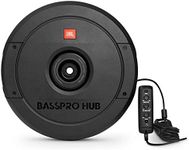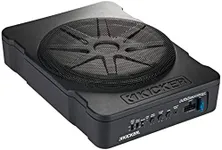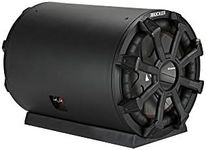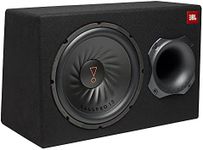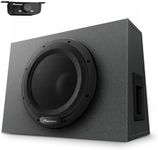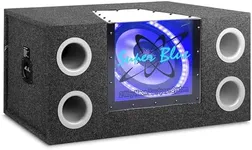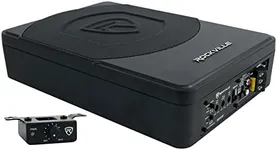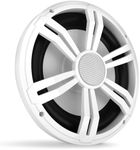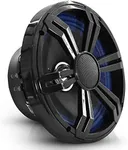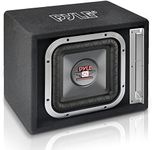Buying Guide for the Best Powered Subwoofers For Cars
Choosing the right powered subwoofer for your car can significantly enhance your audio experience by providing deep, rich bass that complements your music. To make an informed decision, it's important to understand the key specifications and how they align with your needs and preferences. Here are the main specs to consider when selecting a powered subwoofer for your car.Power Output (RMS)Power output, measured in RMS (Root Mean Square), indicates the continuous power a subwoofer can handle. This spec is crucial because it determines how loud and clear the bass will be. Lower RMS values (100-300 watts) are suitable for casual listeners who want a moderate bass boost. Mid-range RMS values (300-600 watts) are ideal for those who enjoy a more pronounced bass presence. Higher RMS values (600+ watts) are best for audiophiles and those who want powerful, thumping bass. Consider your listening habits and the type of music you enjoy to choose the right power output.
Frequency ResponseFrequency response, measured in Hertz (Hz), indicates the range of frequencies a subwoofer can reproduce. This is important because it affects the depth and clarity of the bass. A typical range for car subwoofers is 20-200 Hz. Lower frequencies (20-50 Hz) provide deep, rumbling bass, while higher frequencies (50-200 Hz) offer punchier, more defined bass. If you prefer music genres with deep bass, such as hip-hop or electronic, opt for a subwoofer with a lower frequency response. For genres like rock or pop, a higher frequency response may be more suitable.
SizeThe size of the subwoofer, usually measured in inches, affects both the sound quality and the space it occupies in your car. Common sizes range from 8 to 15 inches. Smaller subwoofers (8-10 inches) are compact and fit easily in most vehicles, providing tight and accurate bass. Medium-sized subwoofers (10-12 inches) offer a balance between size and performance, delivering deeper bass without taking up too much space. Larger subwoofers (12-15 inches) produce the most powerful bass but require more room and may need additional modifications to your car. Consider the available space in your vehicle and your desired bass output when choosing the size.
Enclosure TypeThe enclosure type of a subwoofer affects its sound quality and installation. There are three main types: sealed, ported, and bandpass. Sealed enclosures provide tight, accurate bass and are compact, making them suitable for smaller spaces. Ported enclosures have a vent or port that enhances the bass output, making them ideal for those who want louder, booming bass. Bandpass enclosures are a combination of sealed and ported designs, offering the loudest bass but requiring more space. Choose the enclosure type based on your space constraints and desired bass characteristics.
ImpedanceImpedance, measured in ohms, indicates the electrical resistance of the subwoofer. This spec is important because it affects the compatibility with your car's amplifier. Common impedance values are 2 ohms, 4 ohms, and 8 ohms. Lower impedance (2 ohms) allows more power to flow through, resulting in louder bass, but it can strain your amplifier. Higher impedance (4-8 ohms) is easier on the amplifier but may produce less powerful bass. Check your amplifier's specifications to ensure compatibility and choose an impedance that matches your desired bass output and system setup.
SensitivitySensitivity, measured in decibels (dB), indicates how efficiently a subwoofer converts power into sound. This spec is important because it affects the volume and clarity of the bass. Higher sensitivity (90 dB and above) means the subwoofer can produce more sound with less power, making it suitable for lower-powered systems. Lower sensitivity (below 90 dB) requires more power to achieve the same volume, which can be beneficial for high-powered systems. Consider your amplifier's power output and your desired volume level when choosing a subwoofer with the appropriate sensitivity.
